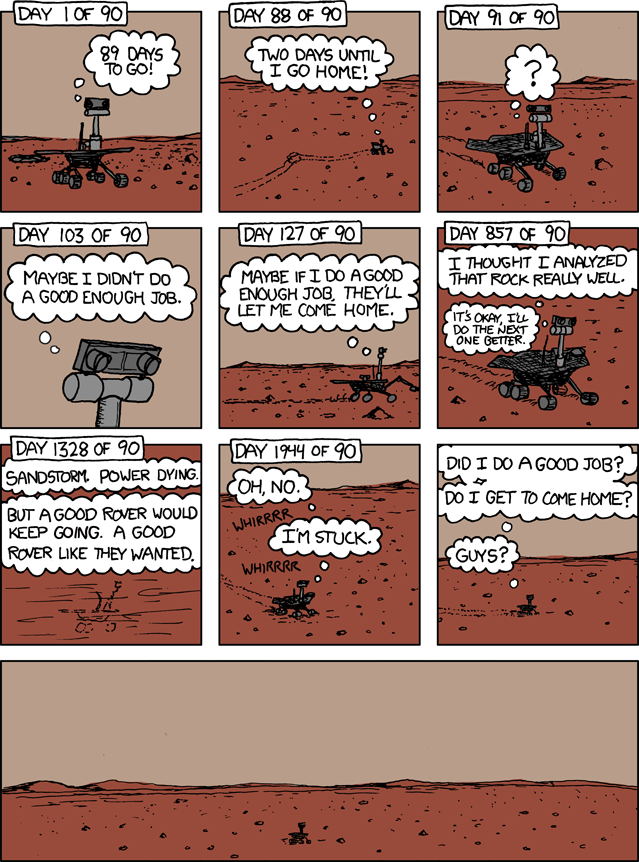
Article link:
It has been five years since NASAs Curiosity rover touched down on Mars, lowered to the surface of the planet by a rocket-powered crane in a sequence scientists dubbed the seven minutes of terror.
Terror, because of the risk of it all going wrong when you drop a $2.5 billion rover on an alien planet.
And seven minutes, because that is how long it would take the car-sized Curiosity to go from the top of Mars atmosphere to the surface.
After approaching the planet at 21,000 kilometres per hour, the heat shield separated and a parachute then reverse rockets fired in succession, slowing the craft down until it hovered metres from the ground.
Then using a mothership called the Sky Crane, suspended in the air by rocket thrusters, Curiosity was slowly brought down to the surface using a never-before tested tethered crane system.
Curiositys task: determine Mars habitability using its 11 different scientific instruments, including three cameras to take detailed images of the landscape, and sensors to analyse rock samples, sniff the atmosphere for organic molecules and detect radiation levels on the planets surface.
Travelling at a glacial speed of about 30 metres per hour, Curiosity has ventured 17 kilometres from its landing site in its search.
Some images taken by Curiosity:

Sunset on Mars.

A Solar Eclipse from Mars. Curiosity captured Phobos, one of the two small martian moons passing in front of the Sun in July, 2015.



Distanced traveled


Earth as seen from Mars
And of course, aliens:

/s









